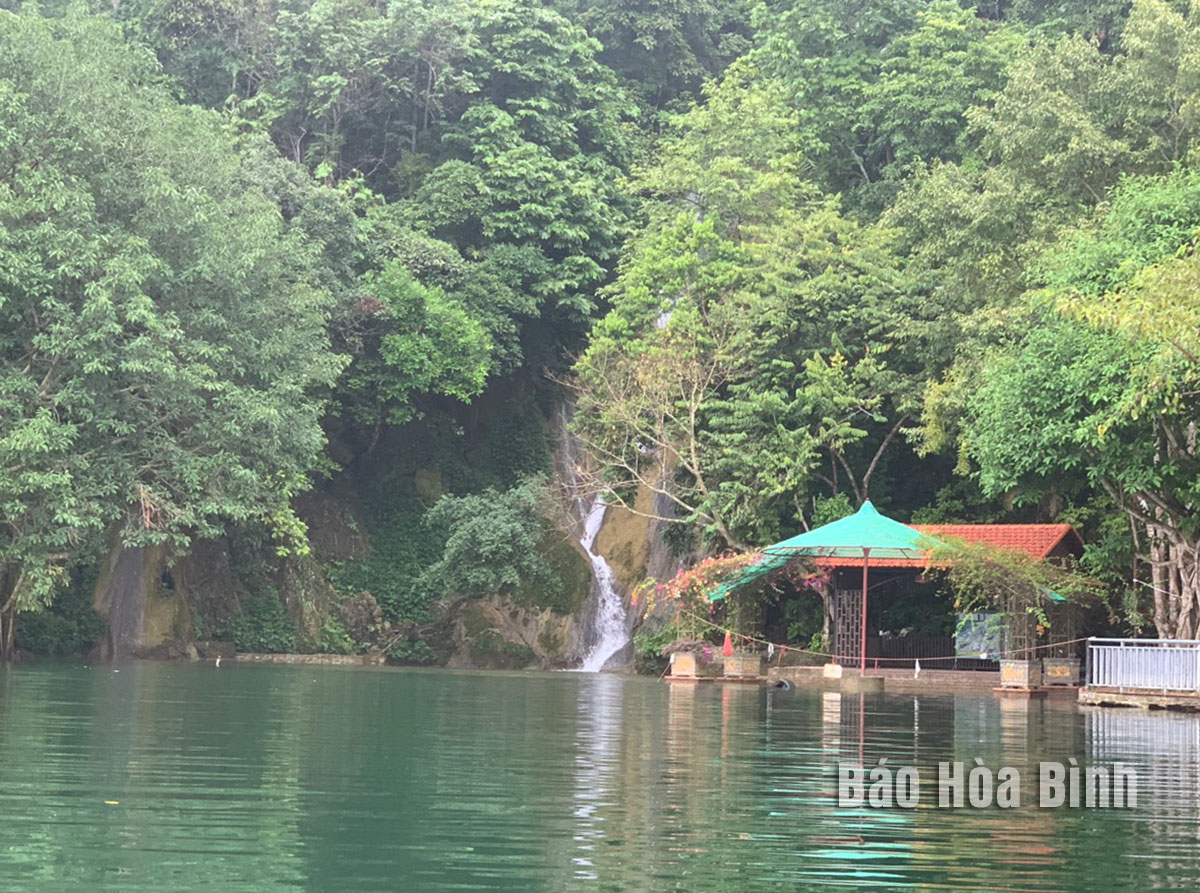
Bich Tru village in Thai Thinh commune, Hoa Binh city, offers visitors a great opportunity to explore a typical Muong village with beautiful landscape, cultural identities and local people’s hospitality.
Some households in Bich Tru village provide homestay services to tap the potential of the locality.
With the construction of the Hoa Binh reservoir, Bich Tru village lost almost all of its arable land. Villagers have shifted to aquaculture and fishing for a living. They have also started tourism to take advantage of the local natural landscapes and traditional culture. Currently, 53 households in the village have 167 fishing cages and four households have engaged in tourism in combination with aquaculture.
It only takes 20 minutes by boat or road to travel from Hoa Binh city’s centre to Bich Tru village. Typical features of Muong village can be found in Bich Tru village, especially stilt houses.
A villager, Bui Van Chuc, said that to protect the forest, his village has long stopped building wooden stilt houses. They switched to building concrete stilt houses which are both solid and airy. In particular, livestock barns are now moved away from the houses to ensure a hygienic environment.
Not only preserving the stilt houses, Bich Tru villagers also keep many customs, which give the village a unique charm.
Women in the village still wear the traditional costumes on holidays and New Year celebrations. In addition, villagers have established a team to practice ancient gong and other traditional songs or dances. They usually perform the songs and dances during holidays and festivals.
Tran Van Doan, head of Bich Tru village, said that local authorities have always urged locals to keep the village clean and green to attract tourists.
Visitors to the village can explore the village by bicycles, climb mountains, go fishing and try local dishes made in Muong style.
Ha Van Thiem, Chairman of the People's Committee of Hoa Binh commune, said that seeing the village’s advantages of natural landscape, the local authority aims to turn Bich Tru into a tourism destination.
The commune has supported households to invest in developing unique tourism products and cooperate with villages of Da Bac district to create attractive tourist routes in the Hoa Binh Hydropower Plant’s reservoir area.
A diverse chain of eco-tourism and resort destinations concentrated in Hoa Binh city and the districts of Tan Lac, Da Bac, and Luong Son… Along with the launch of several key high-quality resort tourism projects, these developments have reshaped the landscape and enhanced the appeal of Hoa Binh as a travel destination.
Boasting diverse terrain, a mild climate, and rich natural resources, Cao Phong district is increasingly asserting its place on Vietnam’s tourism map, attracting both domestic and foreign visitors. The district is renowned for its stunning landscapes, majestic mountains, a crystal-clear hydropower lake, and the unique cultural identity of local ethnic groups.
With its pristine landscapes, unique cultural heritage of Muong ethnic minority, and an expanding range of visitor experiences, Tan Lac district of Hoa Binh has fast become a captivating destination for both domestic and international tourists.
Until now, Sung village in Cao Son commune, Da Bac district remains the only Dao ethnic community in Hoa Binh province to develop a community-based tourism model. Beyond its untouched natural landscapes, cultural identity serves as the cornerstone attraction for visitors.
Alongside the diverse cultural identities of the Kinh, Muong, Tay, Thai, Dao, and Mong ethnic people, Hoa Binh province is also renowned as the "capital" of the northwestern Vietnamese cuisine, offering unique and distinctive dishes. At festivals, during Lunar New Year (Tet), or on significant family or community occasions, special dishes are prepared, leaving a lasting impression on visitors.
A Phong Linh (Yellow Tabebuia) flower garden in Thang village, Thach Yen commune, Cao Phong district is currently in full bloom, drawing a large number of visitors.



